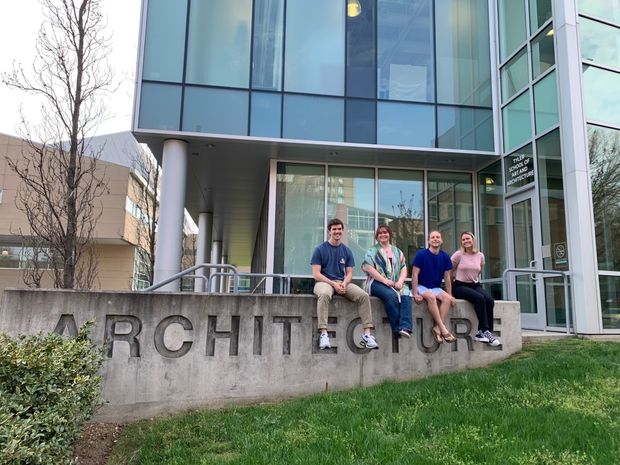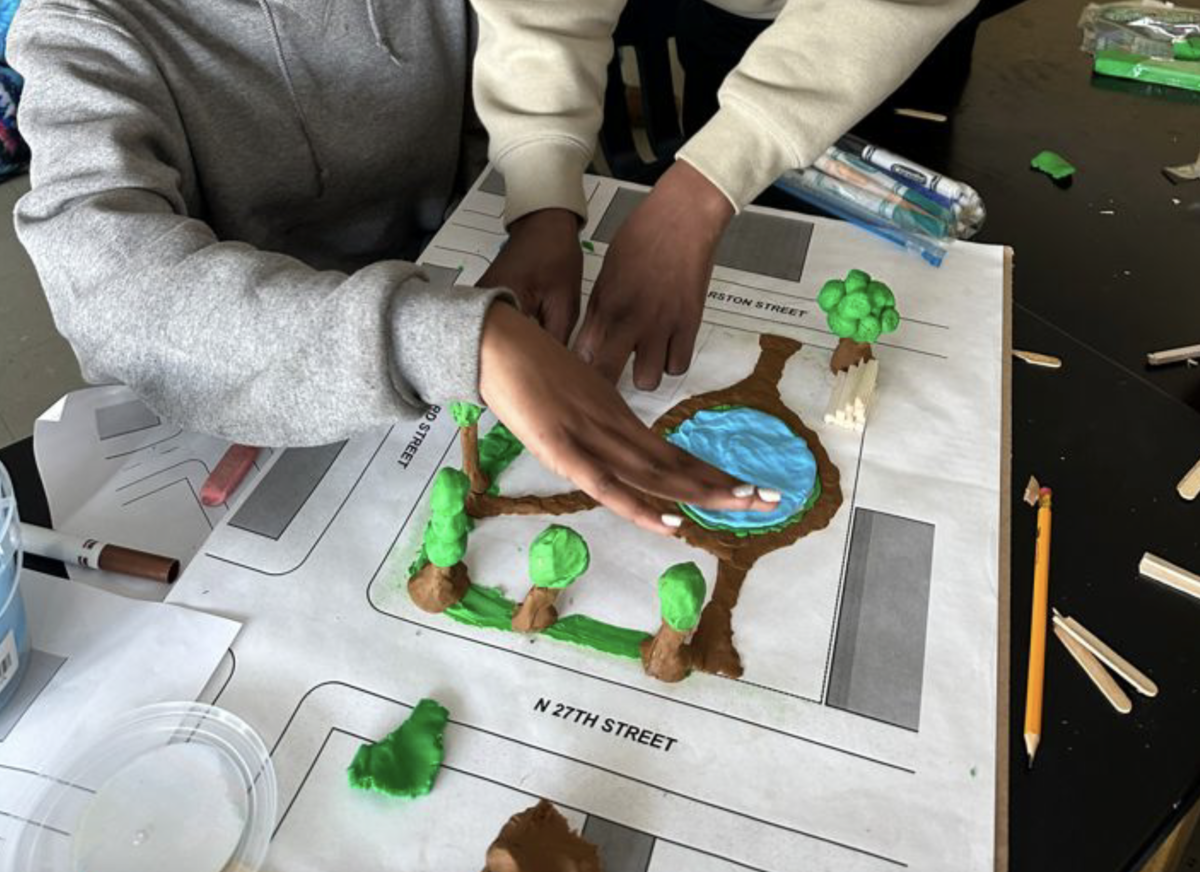Architecture Student-Teaching Course Partners with Philadelphia K-12 Schools

In an upper-level Architecture course led by Kate Wingert-Playdon, Senior Associate Dean and Director of Architecture and Environmental Design and Fauzia Sadiq Garcia, Assistant Professor of Instruction and Curriculum Coordinator of Facilities Management and Architecture Majors, Tyler undergraduate students are learning to adapt their design education instruction to a broader audience by creating custom design curriculums for students in the School District of Philadelphia.
The course is a partnership with the Center for Architecture and Design’s K-12 Design Education Program as well as the school district and serves a dual purpose, showcasing design as a career pathway to Philadelphia public schoolchildren and nurturing interest in design teaching among Tyler Architecture students. The Center for Architecture and Design, based in Center City, has three distinct goals: to celebrate and promote the built environment and related design disciplines; champion the value of thoughtful architecture and design and how it shapes the city of Philadelphia; and connect the design community and public through meaningful programming and education.
“Our intent is to offer this [course] yearly as an opportunity for students who are interested in learning more about design teaching. Our participation in this city-wide initiative provides an important service for our community and showcases design as an educational and career path,” said Sadiq Garcia.
Primarily juniors and seniors, each student is paired with a practicing architect from a volunteer firm and a teacher from the Philadelphia school district to deliver a four-to-six week program for students in grades K-12. The lesson plans emphasize hands-on activities and direct experiences that introduce children to the basic principles of architecture and the built environment.
“As they work in the classroom, adjustments are often made, and future lesson plans are developed so the team can address areas of design education that get the school students excited and grasp their attention,” said Sadiq Garcia.
Tyler students are also paired with volunteer design professionals to bring their expertise into the classroom environment. As students themselves, engaged in learning the visual and spatial language of design, but in a university setting, the Tyler participants observe and offer insights that is invaluable to the teaching team.
Hayden Loiseau (BSArch ‘23), Isabella Savard (BSArch ‘23), Mattew Goldstein (BSArch ‘24), and Victoria Betterly (BSArch ‘23) are participants in the class, and reflected on the purpose of the course, the positive effects of real-world design examples in public school classrooms, and how they feel initiatives like this expose them to more diverse career opportunities after graduation.
When describing a typical day in the class, Savard explained that “there is no such thing. It’s a new structure that has you learning and experiencing new things. One ‘typical day’ could be meeting with your group and talking about activities and making lesson plans; other days you could be doing research on your school and learning more about teaching and education in architecture, and another day you are in the classroom working with students and you become the educator.”
The groundwork that teams lay throughout the semester should give students “a more fully formed idea of what architecture and design education is and how it may be something that they incorporate into their future,” Loiseau said. “I have a much clearer picture of what it may be like to be an educator within the field of architecture and how to begin to go about the teaching process for some of these concepts.”
While not every student who participated with the teams may pursue a career in design in the future, Savard said that the time spent learning about architecture “gave students a greater knowledge about the world around them.”
Betterly felt that the course had the potential to hit close to home for her students. “Because the project that we are working on is based in the students’ neighborhood, it relays the message that positive change in the community is possible.”
“This opportunity is a unique one for students in the School District of Philadelphia,” Goldstein said. “By mixing fun hands-on activities and informative lessons, the students take home new ways to problem solve, work as a team, and express their ideas in a physical matter, such as drawing and building.”
A career in architecture is not widely advertised, and Wingert-Playdon said, “Historically, the profession of architecture is exclusive and as such, many children would not think of studying architecture as an achievable goal. Temple is Philadelphia’s public university, and architecture at Temple was initiated with participation by members of the Philadelphia AIA to broaden the reach of architectural education in the city and region. Our architecture programs are organized to serve a diverse student body. The re-starting of this program, led by Michael Spain and the Center for Architecture and Design creates a pipeline for design education in Philadelphia. Tyler students are participating in an innovative program that serves as a model for all cities to increase awareness and diversity in the profession of architecture.”

7th grade hands-on lesson: "Parking Lot to Paradise"